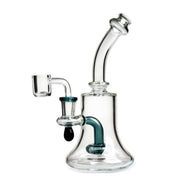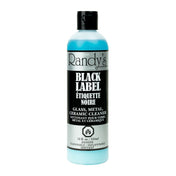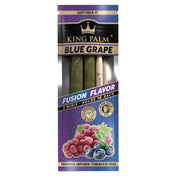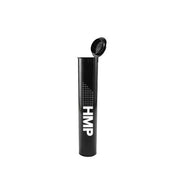
Learning to roll a joint is a rite of passage for many cannabis enthusiasts. It’s a classic, portable, and effective way to enjoy flower. While it might seem intimidating at first, with a little patience and practice, anyone can master this timeless skill.
This guide will walk you through every single step, from preparing your materials to twisting off the final product. We'll cover the essentials, provide detailed instructions, and share pro-tips to help you avoid common mistakes like canoeing or rolling too loosely.
Jump to Section:
- The Essentials: What You'll Need
- The Foundation: Preparing Your Materials
- The Main Event: How to Roll a Joint (Step-by-Step)
- Pro-Tips for a Flawless Burn
- Troubleshooting: Common Mistakes and How to Fix Them
- Frequently Asked Questions (FAQ)
The Essentials: What You'll Need
Before you start, gathering your materials will make the process smooth and enjoyable. Think of it as your mise en place.
- Cannabis Flower: About 0.5 to 1 gram is a great starting point.
- Rolling Papers: Papers come in various sizes (1¼ is standard) and materials (hemp, rice, flax). For beginners, a slightly thicker paper like hemp can be more forgiving.
- Tip/Filter/Crutch: This is a small piece of cardstock rolled into a cylinder that sits at the mouthpiece of the joint. It prevents you from inhaling bits of flower and adds stability. You can buy pre-made filter tips or make your own from thin cardboard (like a business card or the rolling paper pack itself).
- Grinder (Highly Recommended): A grinder breaks down your cannabis into a uniform, fluffy consistency that’s perfect for rolling and ensures an even burn.
- Rolling Tray (Optional): A tray keeps your station clean and prevents waste. A book or clean, flat surface works too.
The Foundation: Preparing Your Materials
Proper preparation is 90% of the battle. Don't rush these steps.
Step 1: Grind Your Cannabis
If you're using whole flower, you need to break it down. While you can use your fingers, a grinder is far superior.
- Why Grind? Grinding creates an even consistency, which is crucial for a smooth, consistent burn. Hand-broken pieces are often irregular, leading to air pockets and an uneven burn (canoeing).
- How to Grind: Place a few small nugs in the grinder's teeth section. Close it and twist several times. The ground flower will fall into the collection chamber below. You're looking for a texture similar to coarse oregano (not a fine powder).
You Might Also Like
2025 Guide to Our Best Weed Grinders
Step 2: Create Your Filter (Crutch)
The filter is your joint's foundation and mouthpiece. It adds structure and makes the joint easier to hold.
- Take your filter material: A strip about 0.75 inches wide and 1 inch long (2˜times2.5 cm) is perfect.
- Make an "accordion" fold: Make 2-3 small "M" or "W" shaped folds at one end of the strip.
- Roll it up: Roll the remaining length of the cardstock tightly around the accordion folds. The final product should be a small, dense cylinder.

The Main Event: How to Roll a Joint (Step-by-Step)
This is where the magic happens. Take your time, be gentle, and don't worry if your first few attempts aren't perfect.
Step 1: Fill the Paper
- Take a single rolling paper and hold it in a U-shape between your thumbs and index fingers, with the glue strip facing you at the top.
- Place your filter at one end of the paper (most right-handed people place it on the left, and vice-versa).
- Sprinkle your ground cannabis evenly into the paper's crease, creating a cone shape that is slightly thinner near the filter and thicker towards the tip. Don't overfill it.
Step 2: Shape and Pack
- Pinch the paper around the cannabis.
- Gently roll the paper back and forth between your thumbs and index fingers. This motion compresses the cannabis into a tight cylindrical shape.
- Feel the density. It should be firm but not rock-solid. This is the most crucial step for getting the feel right.
Step 3: The Tuck
- This is the move that separates beginners from pros.
- Using your thumbs, tuck the un-glued edge of the paper snugly around the filter and the cannabis cylinder you just formed.
- The tuck should be tight and uniform along the entire length of the joint. Use your index fingers to help guide the paper.
Step 4: Lick and Seal
- Once the paper is tucked, continue rolling the joint upwards until only the glue strip is exposed.
- Lightly moisten the glue strip from end to end with your tongue. A little moisture goes a long way.
- Press down and smooth out the seal to close the joint.
Step 5: Pack and Twist
- Your joint is now rolled, but it needs a finishing touch.
- Use a pen, a key, or the end of a shoelace to gently pack down the cannabis from the open end. This ensures a tight pack and an even burn.
- Twist the excess paper at the tip to close it off. This prevents any cannabis from falling out.
Congratulations! You've just rolled your first joint.
Pro-Tips for a Flawless Burn
- Cone It: Tapering the joint so it's slightly wider at the tip than at the filter often leads to a smoother, more flavorful start.
- Backrolling (Advanced): For a joint with less paper and more flavor, try rolling it "inside-out" so the glue strip is on the outside and you burn off the excess paper.
- Check for Soft Spots: Before sealing, gently pinch along the joint to feel for any loosely packed areas. Add a pinch more flower where needed.
- Don't Over-Lick: Too much moisture can tear the paper or make the glue ineffective. A light, quick pass is all you need.
Troubleshooting: Common Mistakes and How to Fix Them
Frequently Asked Questions (FAQ)
How much cannabis should I put in a joint?
A typical joint contains between 0.5 and 1 gram of cannabis. For beginners, starting with 0.5g is recommended as it's easier to roll and manage.
Can I roll a joint without a filter?
Yes, you can. This is often called a "pinner" or old-school joint. However, a filter prevents you from inhaling hot embers or bits of flower and provides a stable mouthpiece, which is why it's highly recommended.
What's the difference between a joint, a spliff, and a blunt?
- Joint: Cannabis rolled in a thin rolling paper (hemp, rice, etc.).
- Spliff: A mix of cannabis and tobacco rolled in a thin rolling paper.
- Blunt: Cannabis rolled in a wrap made from tobacco leaf, such as a hollowed-out cigarillo.
What are the best rolling papers for beginners?
Hemp papers are often a great choice for beginners. They are slightly thicker and have more texture than rice papers, making them easier to grip and less prone to tearing. Brands like Zig-Zag are classic starting points.
My joint tastes too much like paper. Why?
This could be due to the type of paper or rolling too loosely. Try ultra-thin rice or hemp papers for a cleaner taste. Also, consider "backrolling" (an advanced technique) to use the absolute minimum amount of paper.







